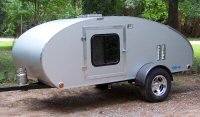[edited] naming reversed by jss06
Are there any tyre specialist out there !!
I have a problem with scrubbing tyres
As you can see the inside tread is wearing much faster than the outside.
I have measured the angles.
I get a [edited] camber] (bottom of wheel outward) of 2 degrees.
6.5mm further out at the bottom of the steel rim.
And [edited] toe-out] (twisted about the vertical axis) of 0.5 degrees.
I am baffled. The [edited] camber] is not very much, 2 Degrees, common in many motor cars and would not its self result in scrubbing.
The [edited] toe-out] would scuff but its only 0.5 degrees.
I can correct the [edited] camber], by adding a hardwood wedge between the suspension unit and the frame, but not the [edited] toe-out].
For now I intend to swap the tyres over and get my money's worth but I need to solve this for the next set not to wear out so quick.
OTHER INFO
I made the TD 2 years ago
I have run say 6000miles.
She weights 340kg
She bobs about a bit when going slowly over rough roads but at 60mph she' as solid as a rock. I wonder if I am seeing down force at speed and the apparent weight of the TD increases and the wheel geometry gets worse.
I also let the tyres down to limit the bouncing, which worked. And then I noticed the wear so they are back at their recommended pressure, 40 PSI ish.
The tyres are 20.5X8.0-10 and £45 each (ouch !)
I made the frame, its not an HF or kit trailer
In the UK we use suspension units like these.





